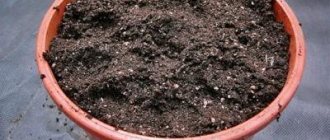A lemon tree on the windowsill is a real decoration of the house. In addition to beautiful shiny dark green foliage and a spreading crown that pleases the eye, it can boast that it bears fruit well at home.
Freshly picked indoor lemons are much tastier and healthier than store-bought ones, so this plant has double benefits - both aesthetic and practical.
Lemon varieties growing at home
However, not all types of lemons are suitable for home cultivation. In order for the tree to take root well, bloom and bear fruit, you should choose one of the specially bred varieties:
- Mayer, meyer or Chinese dwarf is the most common, unpretentious variety. It is distinguished by its small growth (up to 1 m), dense beautiful foliage and small, but sweet and juicy round-shaped fruits.
- Novogruzinsky and Kursky are tall (up to 2 m) varieties. They require more careful attention and care. They bear fruit more often. The fruits are large and fragrant.
- Pavlovsky is an unpretentious bush-like plant of medium height (about 1.5 m) with several trunks.
- Maikopsky is a medium-sized (1.5 m) variety with thin-skinned elongated fruits.
- Eureka is a fast growing variety. It produces fruit with a thick skin and a very sour taste.
- Genoa is a high-yielding dwarf variety. It is distinguished by its tender pulp and aromatic zest without bitterness.
Lemon care at home
In general, lemon is not a very capricious plant. It can be grown in a fairly wide range of temperatures. However, in order to achieve flowering and fruiting, it is necessary to follow the rules of care somewhat more strictly.
Lighting
Like many plants, lemon prefers bright, but diffused sunlight. If the pot is on the windowsill, on summer days it needs to be shaded or moved deeper into the room to avoid sunburn.
In winter, you can make up for the lack of lighting with ultraviolet lamps.
The plant does not like it when the light changes direction, especially during flowering, and may react by dropping flowers and buds. Therefore, it is not recommended to frequently turn the pot or move it to another place.
Temperature
Indoor lemon is not very picky about the room temperature - the main thing is that it does not go beyond +15...+27 °C. In winter, the plant can be kept in a cooler room, but not below +5 °C. Under such conditions, the tree falls into suspended animation without shedding its leaves.
The main requirement is the absence of sudden temperature changes. Lemon does not tolerate them and can drop all its leaves.
Not recommended:
- radically ventilate the room using an open window, exposing the plant to a draft;
- move the pot from a warm room to a cool one or vice versa;
- with the first autumn cold, immediately bring it into the warmth from the street;
- If you buy a plant in a store in winter, you will have to carry it in the cold.
Excessive heat does not benefit the tree in the spring, when it is about to bloom. During this period, the optimal air temperature is +14...+18 °C, otherwise flowering may not occur or the already formed buds risk falling off.
Air humidity
Citrus trees are moisture-loving. For full growth they require air humidity of at least 60%. A room humidifier, a decorative fountain, or simply expanded clay saturated with water on the tray of a pot will help provide it. In this case, you need to ensure that the water does not stagnate and cause rotting of the roots.
Watering
Citrus trees need abundant and timely watering during the period of active growth - spring and summer. In autumn and winter, the frequency is reduced, observing the condition of the soil.
If the plant is dormant in winter, water only occasionally with a small amount of water to prevent the soil from completely drying out. To do this, use settled or filtered water slightly warmer than room temperature. Cold weather can cause root rot. The plant will also benefit from melt or rain water.
Top dressing
They begin to feed the plant in March, after emerging from hibernation and with the beginning of the active growth phase. To do this, alternate organic and mineral fertilizers, adding them to the water for irrigation approximately once every two weeks. In November, feeding is stopped - in winter the plant does not need it.
Features of transplantation
For the first few years of its life, a young lemon is replanted every year. For mature plants, once every three to four years is enough, subject to annual replacement of the top layer of soil.
The optimal time is early spring, before flowering begins, or autumn.
When choosing a pot, remember that the container should not be too large - if there is too much free space, the plant directs its energy to growing roots rather than flowering. In addition, the risk of rotting is higher in spacious tubs.
Transplantation is done using the transshipment method - the roots are carefully removed along with the earthen lump, without damaging it, and placed in a new pot with a layer of drainage (for example, expanded clay) at the bottom. The trunk is not buried - the ground level must remain the same. The free space is filled with fresh substrate.
Earth mixture
The soil for growing lemons is light, neutral or slightly acidic. An earthen mixture for citrus fruits corresponds to these characteristics.
If desired, you can mix it yourself: take two parts of turf soil, one each of humus and leaf soil, and one each of sand and peat.
Crown formation
To ensure that the tree branches grow evenly in all directions, it is recommended to rotate the pot by about 30 degrees every few days. This cannot be done if buds appear on the plant - a change in the direction of light can lead to their falling off.
Crown formation begins when the lemon is one year old. To do this, the top of the tree is cut off with a sharp pruner, leaving a trunk 20 cm high. After this, side shoots appear. They are also pruned after another year so that they branch more strongly.
Pruning not only improves the appearance of the plant, it also promotes good fruiting. But plant growers do not recommend allowing the tree to bloom until the crown formation is complete.
In adult fruit-bearing plants, it is advisable to remove the shoot from which the fruit is plucked - it will no longer branch.
Flowering and pollination
The flowering process takes a lot of energy from the plant. To help it successfully begin to bear fruit, it is necessary to carefully care for it at this time.
One of the conditions is a decrease in the number of flowers on the tree. The younger it is, the less fruit it can grow. Therefore, during the first flowering period, it should not be allowed to have more than four ovaries - the rest must be removed. With each subsequent flowering, the number of fruits can be increased by two.
Pollination is a process necessary for fruit set. Under natural conditions, it occurs with the help of insects. You can easily do this at home with a regular brush, carefully transferring pollen from flower to flower.
Spring feeding
Caring for a lemon in a pot at home , despite the same room temperature throughout the year, requires regular feeding in the spring. Any high-nitrogen fertilizer intended for citrus fruits will do. They will help the tree to actively grow leaves and gain strength to set fruit.
It is important to follow the instructions on the packaging and dosage, because satiety with nutrition can be more harmful to the plant than its lack. Mixing two or more drugs is undesirable unless the need for this is indicated in a separate paragraph (this may be the case with complex feeding).
As daylight hours increase, lemons need more nitrogen to grow green mass.
Rules for growing lemon fruits
The development and ripening of fruits on a lemon tree takes from 7 to 9 months. During this period, several rules must be observed:
- avoid temperature changes;
- do not turn or move the flower pot again;
- Do not trim stems or leaves.
The foliage of the tree plays a very important role in the ripening of lemons. It is she who provides them with carbon dioxide and nutrients. It is believed that at this time at least ten leaves should grow on the plant for each fruit.
Ripe lemons are picked one and a half to two months after formation. If not harvested on time, the skin will become thick and rough, and the flesh will become dry.
House plant lemongrass: description and photo
Schisandra can often be found as a shrub form used for fencing a personal plot.
External features that can be seen in almost any photo on the Internet include:
- The stems are long with flaky bark and can reach 3 cm in width;
- The leaves are simple, large and fleshy, ovate in shape and dark green in color;
- The flowers are dioecious (with flowers of both sexes on different plants) or monoecious (with flowers of both sexes on the same plant). The color of the petals is white or pink;
- The garden-shaped fruits are round, rich red in color, somewhat reminiscent of currants. One berry often contains one or two seeds. They ripen in early autumn.
The garden form tolerates frost well. The year of fruiting alternates with a year of absence of berries, which are widely used in medicine.
Reproduction of indoor lemon
Indoor lemons are propagated by seeds and cuttings. Both methods are quite successful, but sowing is more labor-intensive.
Regardless of what variety you need to grow, you can use the seeds of regular store-bought lemons. You should choose the largest ones. You can then follow the instructions:
- Immediately after extraction, soak the seeds for several hours in a growth stimulator solution.
- Prepare small containers with holes in the bottom and a layer of drainage.
- Fill the containers with soil - the same as for adult plants.
- Plant one seed in each pot, deepening them 2 cm.
- Cover with film or cut plastic bottles and place in a warm (not lower than +18 °C) place.
- Ventilate and spray from time to time. Water only when there are signs of drying out of the soil.
It must be taken into account that not all seedlings will sprout. Germination may take two to four weeks after planting. When four leaves form on the sprouts, you can transplant them into a pot.
When propagated from seed, plants lose all varietal characteristics and will not bear fruit. In order for them to turn into full-fledged fruit trees, it is necessary to graft against fruit-bearing lemon.
An easier way is to propagate an adult tree by cuttings. They can be taken from flower growers who grow lemons at home, or received by mail by ordering from an online store.
A suitable cutting is 8-12 cm long and has at least three buds. The cut should be oblique, at a 45-degree angle. The bottom leaf needs to be cut off and the remaining leaves shortened by half.
Planting is done step by step:
- Prepare a pot of the required size with drainage holes, but put a layer of expanded clay at the bottom and fill it with soil.
- The cut of the cutting is treated with a growth stimulator.
- Place the seedling vertically in soil of a standard composition for citrus fruits, deepening the stem by 1-1.5 cm.
- Place in a warm place and spray regularly. Watering is carried out only when the soil dries out.
Rooting of cuttings is usually completed in a month or a month and a half.
Folk remedies
There are many folk recipes that can also be tried in practice. Lemon loves river water and silt (they cover the surface of the earth in a pot with it), aquarium water with the remains of fish, and herbal infusions that many summer residents prepare for watering garden crops.
Herbal infusion
It’s easy to prepare the herbal solution: after weeding, the weeds, as well as nettles and quinoa, are placed in a container, filled with water, covered with a lid and left in the sun to ferment for 10 days, remembering to stir periodically. The solution is filtered through cheesecloth. Before watering, dilute: add 0.5 liters of green fertilizer to a bucket of water.
It is important that the infusion does not contain weed seeds, which remain viable even after fermentation.
Eggshell
Eggshells are used as an additional source of calcium. It is crushed, filled with water, left for several days and poured over the lemon.
Sugar
Once a week, you can feed the plant with a sweet solution at a concentration of 1 teaspoon of sugar per glass of water. Glucose is a real energy source that stimulates the growth of new shoots.
Banana peel
Feeding indoor flowers with infusion or powder from dried banana peels is a fairly popular, economical way. It is quite suitable for citrus fruits, as it contains potassium, calcium, phosphorus, and amino acids. The infusion is prepared quickly. Place two banana skins at the bottom of a three-liter jar, fill with warm water, and place in a dark place. After a couple of days you can water it, after diluting it with water (1:1).
To prepare dry fertilizer, the washed peel is cut, dried in an oven or dehydrator, and crushed using a coffee grinder or blender.
Pests and diseases of indoor lemon
The disadvantage of citrus trees is their susceptibility to a large number of diseases, some of which are useless to fight.
| Disease | Signs | Treatment |
| Sheet mosaic | Curling of leaves, light specks, stunted growth. | Isolate from other plants, provide proper care and feeding. In case of severe infection, destroy the plant. |
| Citrus cancer | Deformation and dark spots on leaves and fruits, growth arrest. | Destroy the plant. The disease has no cure. |
| Tristeza | Unreasonable leaf fall, brown spots on the trunk and branches. | |
| Melseko | Drying that starts at the tips of the leaves and spreads to the branches. Leaf fall. Redness on cut branches. | |
| Gomoz | Oblong dark spots on the trunk and branches, often covered with cracks, from which a yellow resinous substance oozes. | Remove affected areas and treat with a fungicidal preparation. Repeat treatment until the spots disappear completely. |
| Anthracnose | Fading and falling leaves. Reddish spots on fruits. | Remove all affected parts, treat the plant with Fitosporin or Bordeaux mixture. |
| Scab | Yellow spots on the leaves, subsequently swelling and acquiring a pinkish color. Orange spots on fruits. | |
| Root rot | Leaf fall, smell of rot, darkening and softening of roots. | Carry out an unscheduled transplant. Clear the root system of soil, cut off damaged roots and treat with crushed activated carbon. Completely replace the soil. |
Sometimes the reason for a plant’s poor health lies in an attack by pests.
| Pest | Signs | Treatment |
| Shchitovka | Brown tubercles on leaves and stems, sticky coating, wilting. | Treat the plant with soapy water and rinse in the shower. Repeat after a few days. |
| Aphid | Deformation of leaves, sticky coating, visible accumulations of insects. | Cut off affected leaves. If the stems are infected, treat them with garlic infusion. In advanced cases, treat with insecticides. |
| Root aphid | Stunting of growth, wilting and yellowing of foliage. | Remove the roots from the pot, treat them with garlic infusion or an insecticidal preparation, and replant them in new soil. |
| Spider mite | Thin sticky web on young shoots. | Every five days, spray the plant with a solution of boric acid. |
To prevent the lemon tree from being infected by parasites and diseases, you need to maintain the temperature regime, maintain indoor air humidity at the required level, systematically fertilize the soil and avoid excessive or too little watering.
The nuances of transplantation
If citrus dies during transplantation, although watering and fertilizing are carried out according to the recommendations, the reason may lie in the wrong pot. If it is too large, it can lead to root rot. It is better to choose pots that match the size of the tree's root system, and replant it only if the tree becomes crowded. It is better to increase the planting capacity gradually, controlling the development of the root system.
It is imperative to provide access to oxygen to the roots. To do this, place the container with lemon on a tray with a gap to facilitate the penetration of air into the soil. Use a stone or wood base.
After the transplant is completed, the plant in a new, more spacious container is returned to its original place where it stood previously. Lemon is a conservative plant; any change in environment can negatively affect the growth and development of the plant. Because of this, it can get sick or even die.
If you decide to turn the tree with the other side towards the sun, then you need to do this gradually, turning the crown by 10 degrees and waiting time for adaptation. Only then will your lemon grow strong, healthy and fertile.











